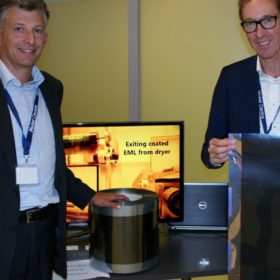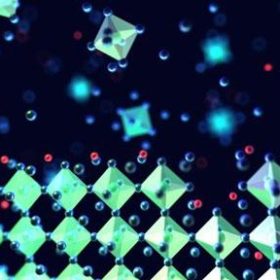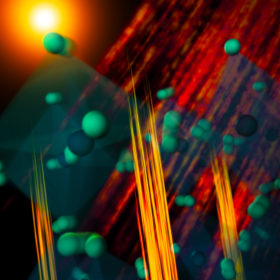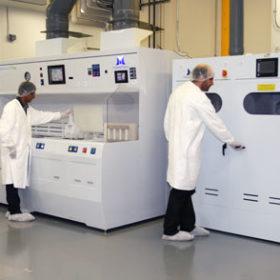Solliance hits 26.3% efficiency on perovskite/silicon tandem solar cell
European solar research organization, Solliance and the Energy Research Center of the Netherlands (ECN) have announced the achievement of 26.3% efficiency on a transparent perovskite solar cell combined with a crystalline silicon solar cell.
Fixing perovskite defects with potassium
Scientists led by Cambridge University have discovered that adding a simple solution of potassium to the ink solution has the effect of ‘healing’ defects in metal-halide perovskite films, and immobilizing ion movement. This, according to the researchers, could push the material to higher efficiencies, while also increasing stability.
US scientists gain new insight into inner workings of hybrid perovskites
Researchers at Stanford University and the Department of Energy’s SLAC National Accelerator Laboratory have provided a new understanding of what happens inside a hybrid perovskite material in the first few trillionths of a second after it is hit with simulated sunlight.
Japanese scientists develop ZHR method to improve manufacturing of thin film monocrystalline silicon
The research team believes that the new technology may resolve technical problems and drastically reduce the manufacturing cost of the lift-off process in the production of thin film monocrystalline solar cells.
Natcore develops new processes for patented foil cell
U.S. based technology company, Natcore has announced two new processes, which it says could dramatically reduce the production costs of its foil cell, which it has been working to commercialize for the past couple of years.
Q&A: JinkoSolar discusses half cut cells, multi-busbars and bifacial technology
Ahead of its upcoming webinar, on March 27, JinkoSolar’s Head of Technical Service Europe, Andrea Viaro, discusses the company’s new Half Cell (HC) Series, the benefits of multi-busbar and bifacial technology, and upcoming innovations, in a Q&A with pv magazine.
Australian researchers demonstrate first working proton battery
Scientists at the Royal Melbourne Institute of Technology (RMIT) have demonstrated the first working example of a “proton battery”, which utilizes a carbon electrode and a reversible hydrogen fuel cell for the storage of energy. The scientists say their small prototype has already demonstrated similar storage capacities to commercially available lithium-ion batteries, with plenty of potential for further optimization.
Chinese breakthrough in harvesting energy from the sun and the rain
A team of scientists based at the Jiangsu Key Laboratory for Carbon-Based Functional Materials and Devices has integrated a silicon solar cell with a device that generates power from the motion of raindrops, an innovation which could greatly enhance performance in cloudier climates.
Berkeley Lab scientists confirm century-old theory of high performance batteries
Researchers in the U.S. have confirmed the existence of a novel state of the element manganese, first proposed in a journal dating from 1928, which could allow for the development of low-cost, high performance batteries for grid level and other energy storage applications.
US researchers develop new organic solar cell architecture
A team of scientists based at New York University (NYU)’s Tandon School of Engineering has developed a method of improving the performance of non-fullerene organic solar cells, by introducing a crystallizing agent.










